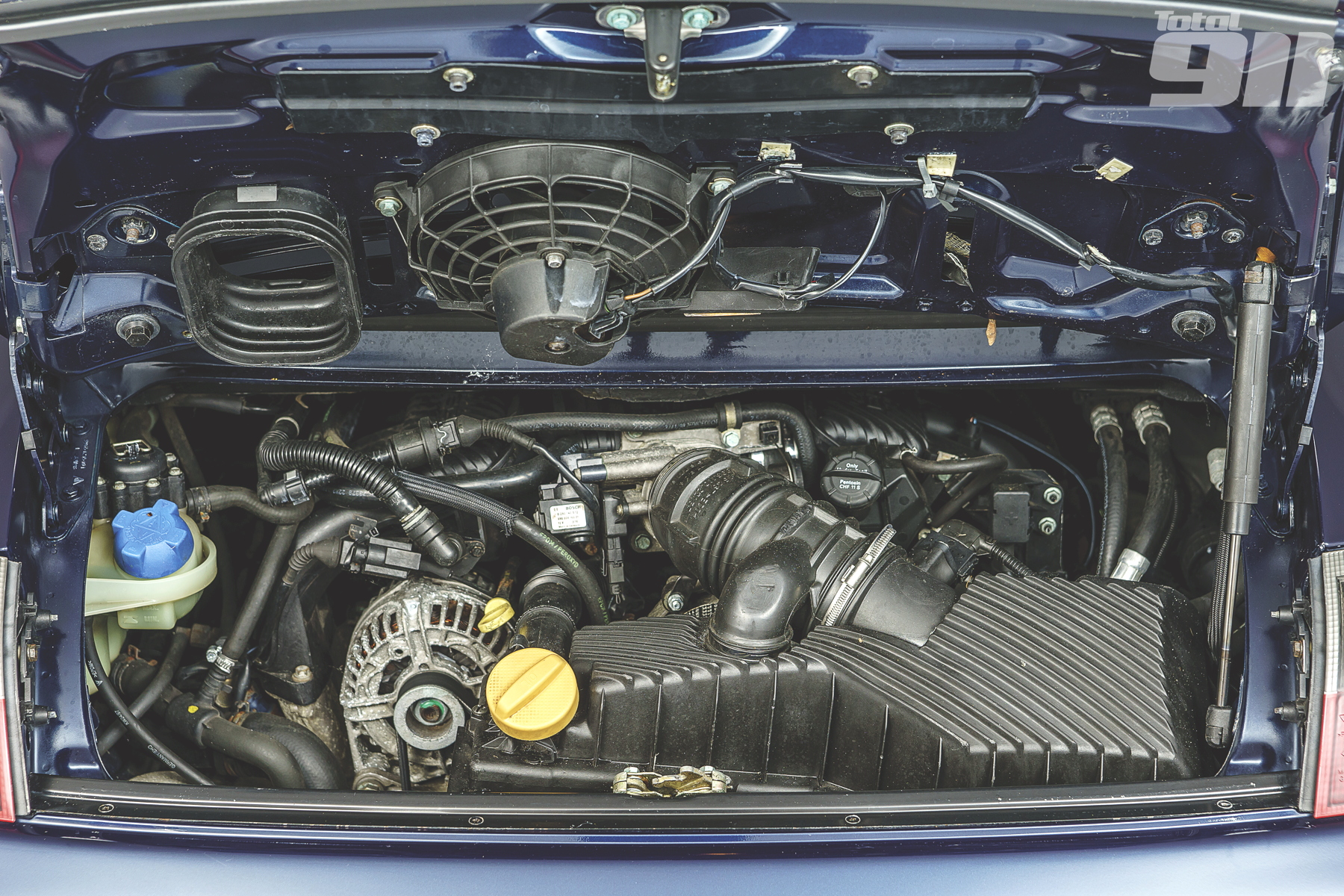Technology explained: Intermediate shaft
In every 911 engine up until the introduction of the 9A1 DFI unit, the crankshafts indirectly drive the camshafts via the intermediate shaft. Its use allows the speed of the timing chains to be reduced, increasing chain life. It’s a setup that first appeared in the 547 flat four from the 356A Carrera.
Every Porsche IMS until the arrival of the M96 ran in plain bearings that were pressure fed by engine oil, preventing the possibility of them seizing. With the arrival of water-cooled engines in 1998 though, the design was changed, with the camshafts no longer driven off just one end of the IMS.
The revised cylinder head design required sprockets mounted on either end of the intermediate shaft, with the front end of the shaft running in a plain bearing surface integrated into the front oil pump console.
The sprocket on the front end of the IMS is connected to the timing chain for the 4-6 cylinder bank, while the rearward sprocket on the IMS drives the camshaft for the 1-3 bank.
At the very tail of the intermediate shaft is a smaller sprocket connected to the crankshaft via a chain. This is the connection that powers the IMS.
At the flywheel end of the M96 and M97’s IMS is a sealed roller bearing. Due to the design of the oil galleries in these engines, a plain bearing at this end proved impossible to implement.
This roller bearing is held in place by a steel flange, which holds the inner race stationery, allowing the outer race to rotate on a number of ball bearings. Initial IMS bearings were twin-row, with later designs moving to single row designs.
All can suffer from the break down of the bearing seals though, which allows the grease packed inside the IMS bearing to wash out. This can cause metallic compounds to enter the oil flow of the engine causing internal damage.
In the worst cases, the bearing seize, causing the IMS to snap, resulting in a catastrophic engine failure. This is though, a rare occurrence.
Our online ‘technology explained’ features are the perfect way to brush up on Porsche’s increasingly complex engineering. Read them all here.



Comments (0)